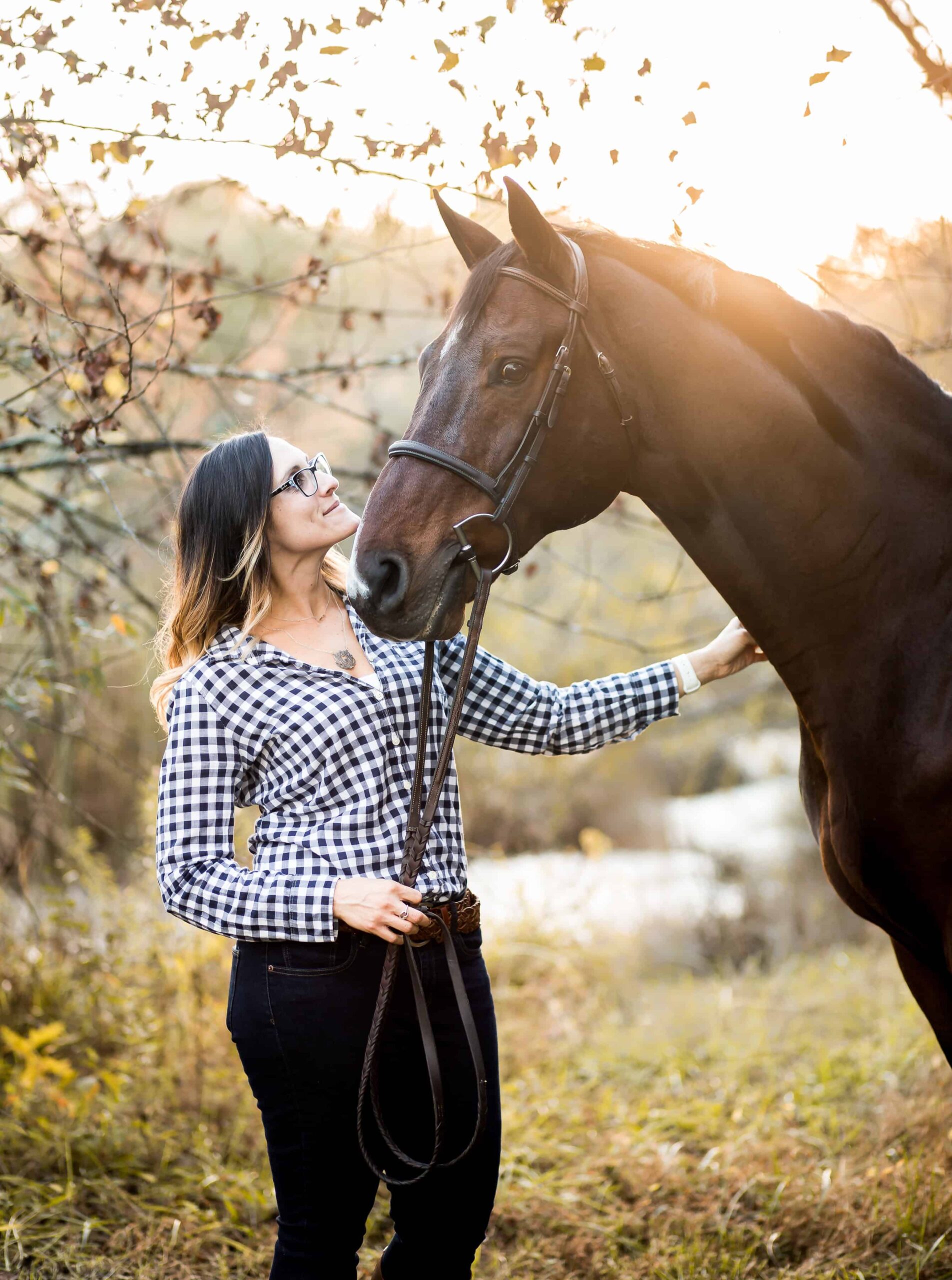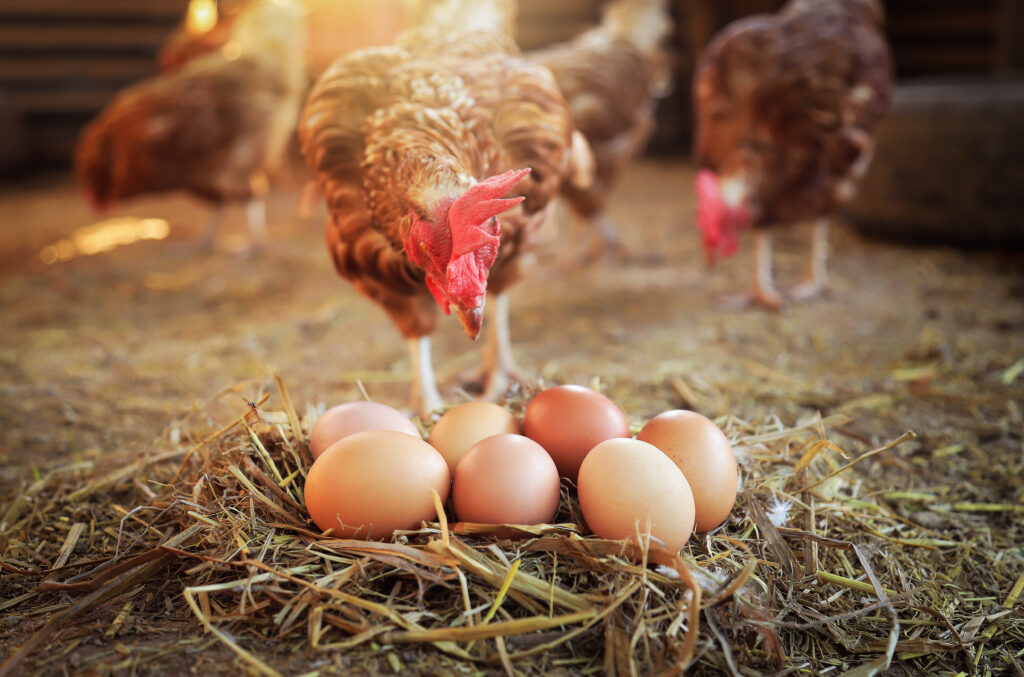
Ingredients:
- 1 tbsp Permectrin 2
- 3/4 c Healthy Haircare Hair Moisturizer
- 2 tsp Citronella
- 1 c White Vinegar
- 1 tsp Dawn liquid dish soap
- Water
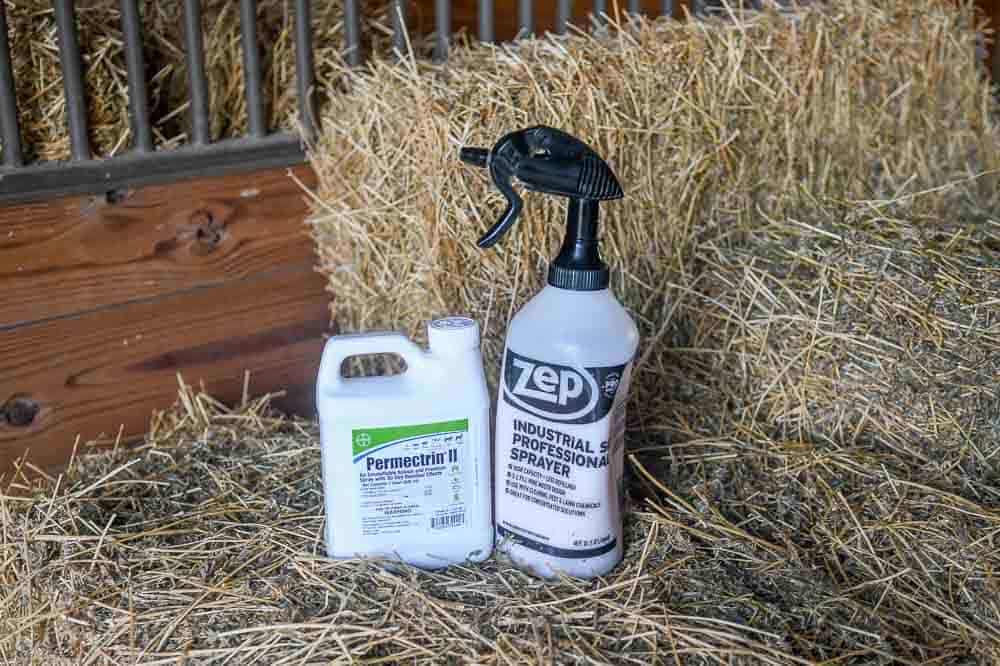

As the warm weather moves in, so do the bugs. If you own livestock or spend time outside, you know how irritating these little pests can be to animals and humans alike. While fly spray or can be helpful, these topicals can come with a hefty price tag and a long list of toxic chemicals. For me, making my own homemade fly spray is a way to minimize the costs it’s also a way to control chemical exposure.
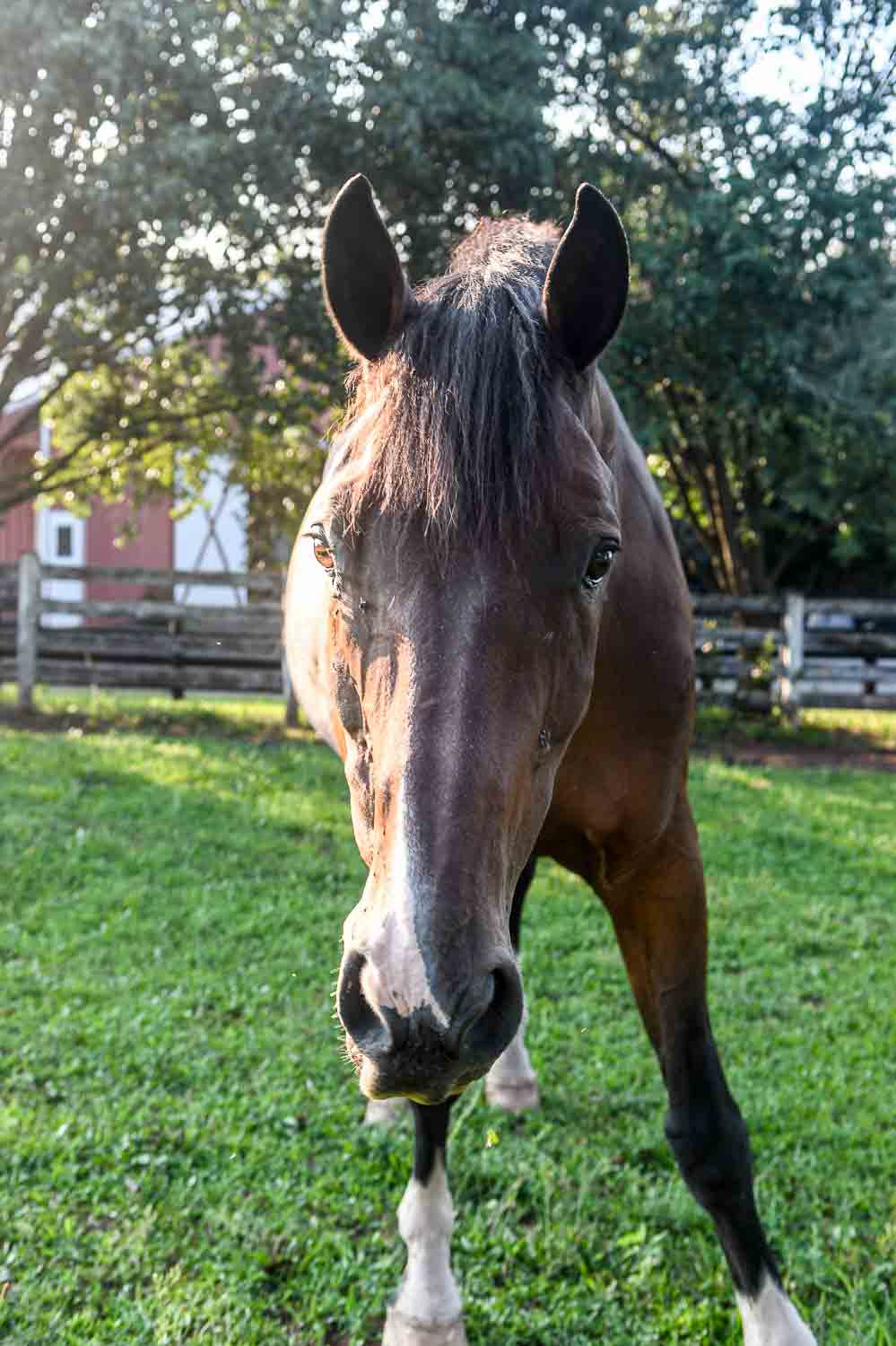
Since moving to the farm, I have been battling an array of pesky insects. I didn’t have a plan going into the spring for fly management – let’s just say there’s a large learning curve that comes with the homestead lifestyle.
To help minimize cost and maximize coverage, I decided to start making my own fly spray.
Along the way some things have worked, and some things have been an epic fail! Let me help you learn from my mistakes and share with your my simple and inexpensive homemade fly spray recipe.
Also, learn why I choose to go with a safe insecticide and not the all natural essential oil route.

I’ve tried using “all natural” products for my homemade fly spray based on essential oils. My biggest issue is the ineffectiveness. My kids are outside for hours at a time and frequently, I have noticed within minutes of applying, the pests return and their stress returns.
The more biting the more skin irritation and the more foot stomping. This leads to grumpy horses and destruction of their feet over time. That in itself was the reason I decided to choose a safe insecticide to add to my homemade recipe.
Now, there are some things you need to think about when choosing what products you’re willing to include in your own recipes.
First off, some horses can have very sensitive skin. This sensitivity may cause you to alter the products you choose to use in homemade fly spray. This is actually why I prefer to make my own fly spray, simply because I can control the ingredients.
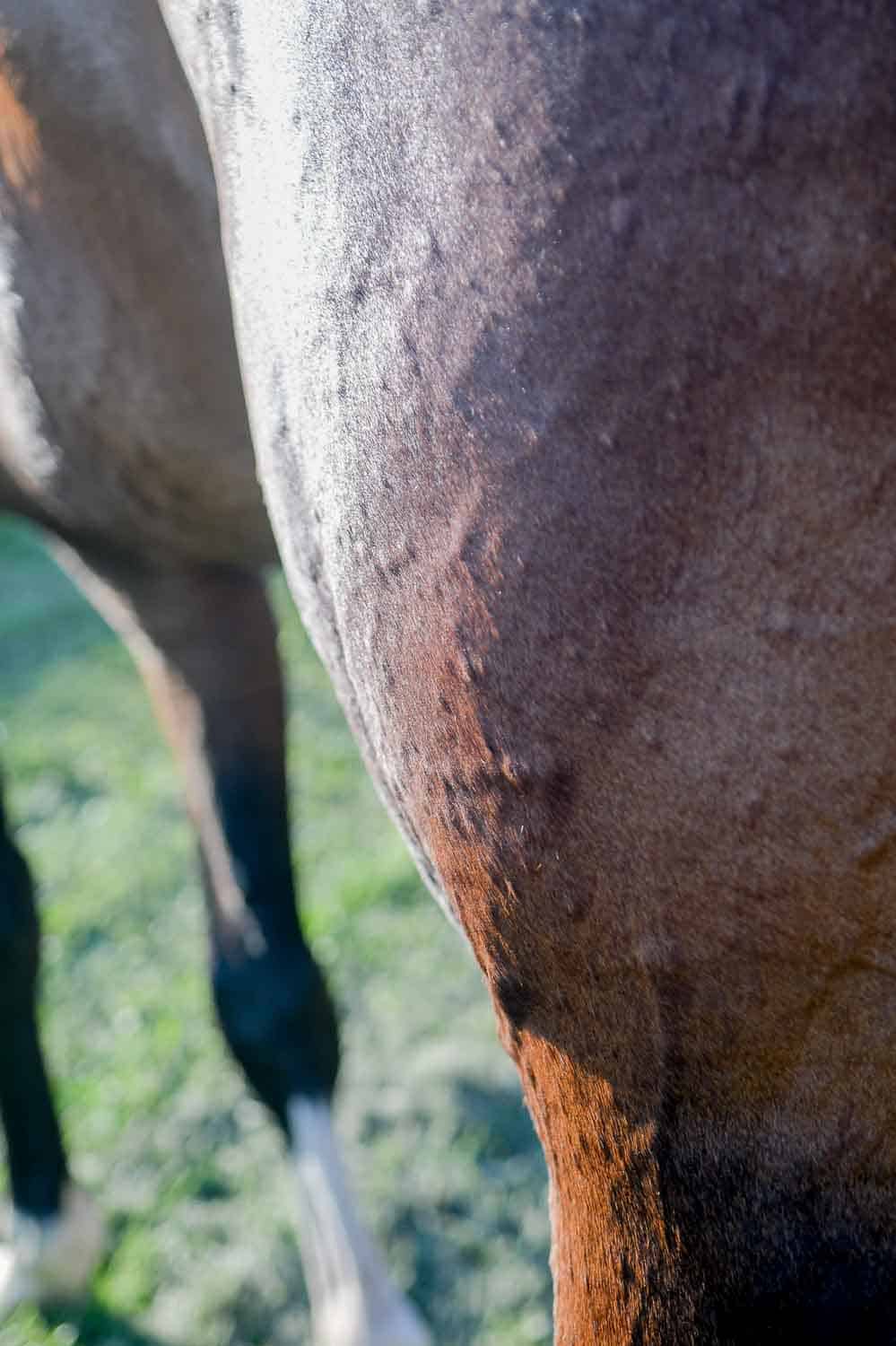
While all natural fly spray made me feel better about applying it, it was also significantly more costly. Also, it was significantly less effective. I was having to apply it much more frequently – thus going through it much faster.
As most of us know, essential oils are not cheap. They can also be absorbed into the body, causing metabolic imbalances.
These were my two main reasons I choose to look for alternative options for my fly spray recipe.
After much research, I finally decided to add an insecticide, called permethrin, to my homemade fly spray recipe.
Holy cow, what a difference!
Permethrin is an insecticide in the pyrethroid family. Pyrethroids are synthetic chemicals that act like natural extracts from the chrysanthemum flower. It is used to help control insects such as flies, ticks, and mosquitos. It can come in a liquid, powder, or dust form.
Permethrin effects insects if they touch or eat it. It affects their nervous system causing muscle spasms, paralysis and death. It’s is toxic to insects because their systems cannot break it down like dogs, horses and people.
While toxic to insects, permethrin is considered safe for livestock, dogs and humans.
Be careful spraying around cats though, they are more sensitive to permethrin as their bodies take longer to break it down than dogs. This can cause them to be ill.
Still concerned? You can visit this list of medical resources to help you decide if this is a chemical you feel safe using.
For me, I needed something that would make my horses happy. After doing my own research, I felt comfortable adding peremthrin into my fly spray recipe.
Essential oils can have great benefits for horses. Often strong essential oils need carrier oils to help diffuse when applied topically.
However, in some cases, essential oils can be more harmful than beneficial. Horses are much more sensitive to essential oils than humans.
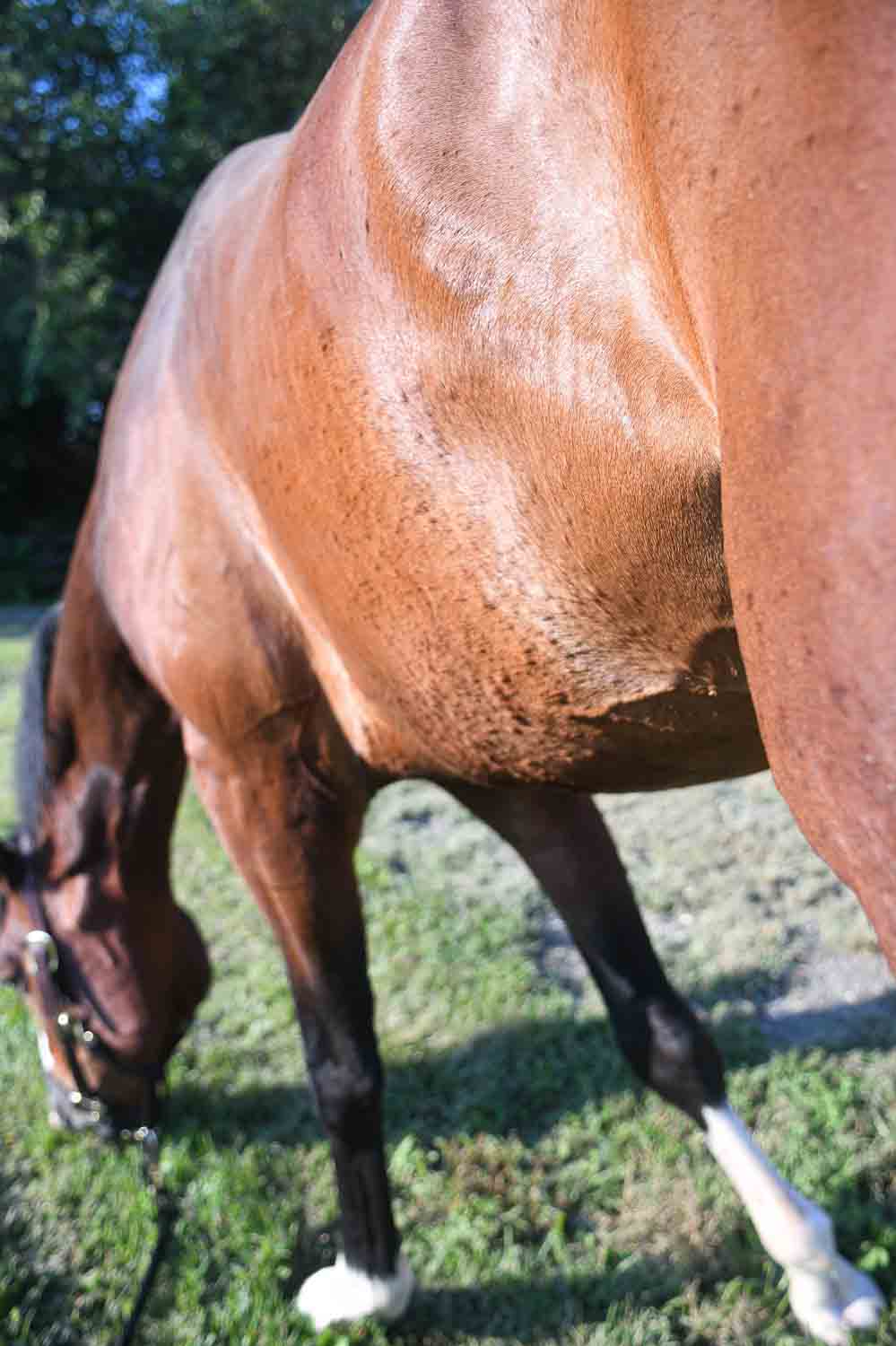
If sensitive, skin reactions can occur which results in hives, skin irritation or loss of fur. Additionally, some essential oils (such as lavender and chamomile) may be considered a banned substance competitive horses. It’s necessary to make sure you’re aware of your controlled and band substances if your livestock is in competition.
When choosing your essential oils, make sure you choose only pure oils. This means only containing compounds from the plant. Some essential oils have solvents in them or are synthetically derived, both can be harmful.
With this said, I do still choose to add citronella to my homemade recipe. I’m not saying all essential oils are bad, but just know your oils before following some random recipe you find online!
Again, learn from my mistakes!
With ALL that said, here is what I include in my recipe and why…
Permectin 2 (Permethrin at 10%) – A commonly used insecticide that is extremely efficient at controlling the insect population. When flies come into contact, they die. This helps control the population, thus minimizing them from continually chomping on my babies!
Healthy Haircare Hair Moisturizer – This oil based moisturizer is not only great for conditioning my horses coats, it also helps the fly spray solution adhere to their fur. This means I don’t have to continuously reapply. Less application means less product used. Win!
Citronella – this naturally derived oil is considered to be effective at keeping mosquitos and other insects at bay. However, studies show that citronella alone is only 35% effective are deterring mosquitos and 15% flies. This means it’s more effective in combination with other insect repellents.
Distilled White Vinegar – is an effective insect deterrent. Pairing it with essential oils increases its effectiveness. Don’t substitute distilled white vinegar for Apple Cider Vinegar, it attracts insects due to it’s “appealing” smell.
Dawn Liquid Dish Soap – when it comes in contact with insects, will disrupt their cellular membrane and dissolve their exoskeletons. It also helps adherence of solvent to fur to increase longevity of application.
Water – To help dilute the concentration of additives to minimize skin irritation.
Get those pesky insects under control with this simple to make homemade fly spray. This simple recipe will make your animals and pocks happy.

Notes:
**This recipe is for a 1 liter spray bottle**

I hope this recipe helps your loved ones tolerate the long days of summer with less irritation from those pesky bugs.
I know my guys have been much happier since I’ve started using this spray – and happy horses means a happy momma!
Till next time,

PIN IT FOR LATER

RELATED POSTS:



Thanks for visiting my little piece of the internet!
I’m Maria, a lover of furry things, coffee and anything creative. This blog is where I love to share affordable home decor ideas, great DIYs, yummy recipes, unique crafts and so much more.
ETSY SHOP
RECENT POSTS
Join the newsletter and stay updated on all the DIYs, recipes, crafts, renovations and much more!
